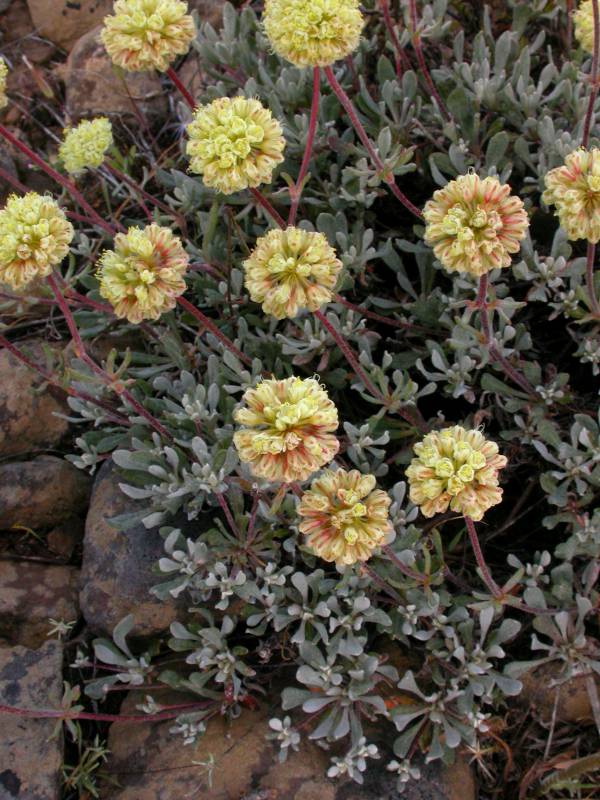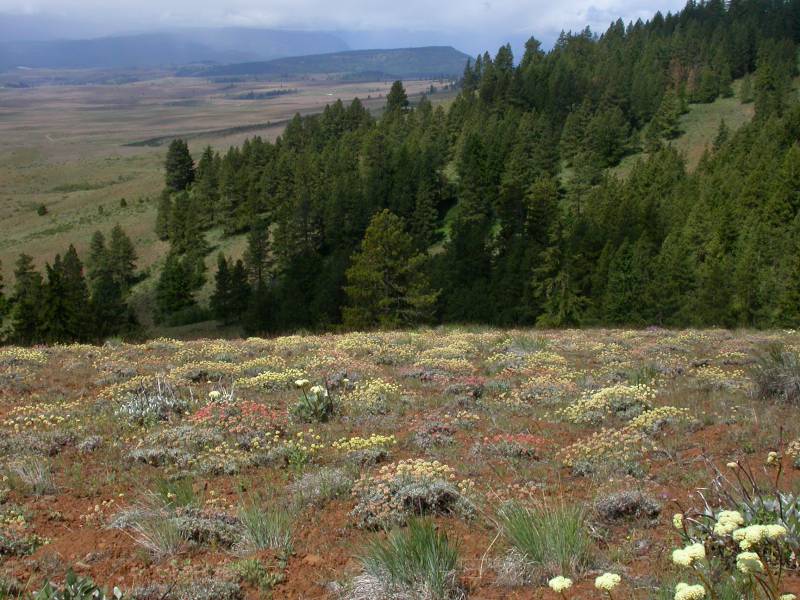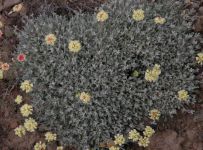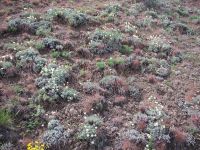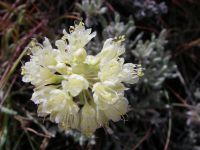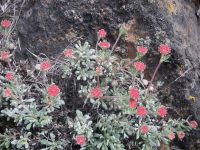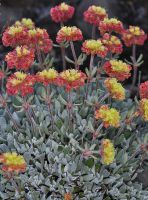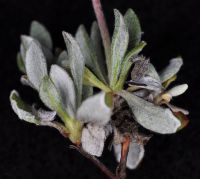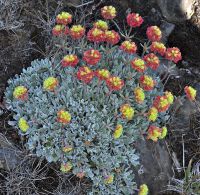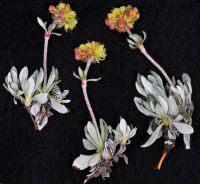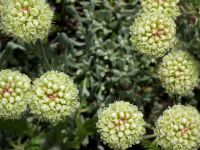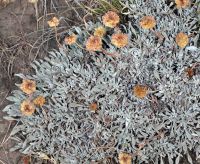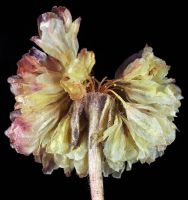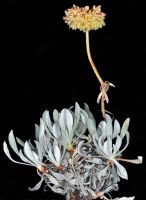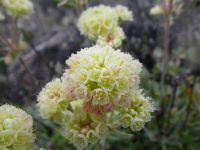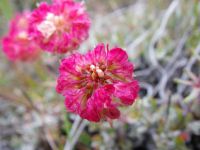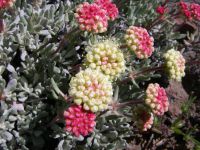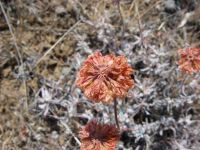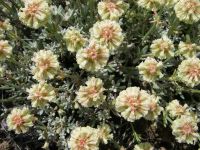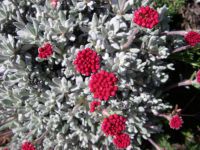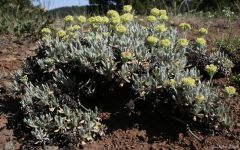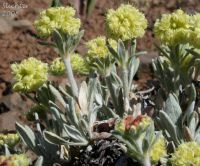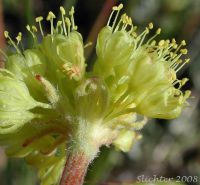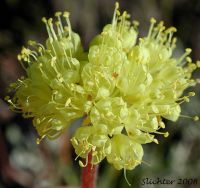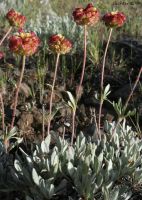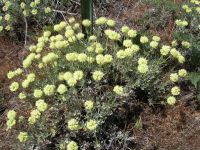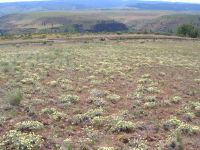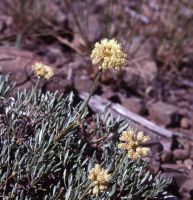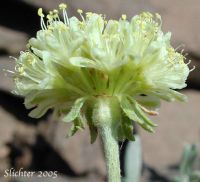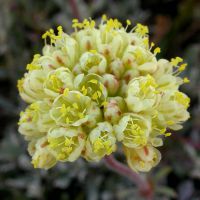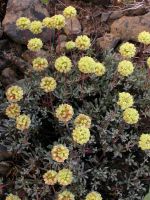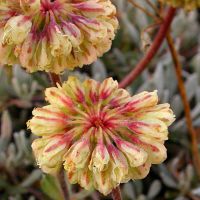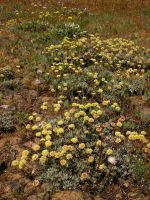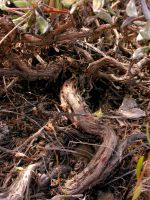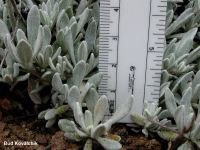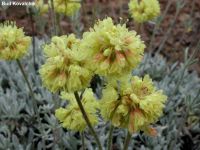Distribution: Occurring east of the Cascades crest in Washington, chiefly in the central region; Washington to California, east to Idaho and Nevada.
Habitat: Sagebrush or juniper flats to ponderosa pine forests, often on lithosol.
Flowers: May-July
Origin: Native
Growth Duration: Perennial
Conservation Status: Not of concern
Pollination: Bumblebees, bees, flies, butterflies, beetles, wasps
Low, matted subshrubs 5 to 15 cm. in height.
Numerous, linear to linear-spatulate, 5 to 20 mm. long, gray- or white-woolly on both surfaces, especially the lower.
Flowering stems 5-10 cm. long, with a whorl of bracts at mid-length, and generally a single, terminal cup-shaped involucre of 6-10 oblong, white-wooly lobes about 3 mm. long. Flower buds blood-red, opening to cream-colored or slightly pinkish or yellowish tepals, 6-8 mm. long with a stipe-like base 1-2 mm. long
Separate from the similar Eriogonum thymoides by the involucre lobes; E. thymoides has erect lobes, E. douglasii, reflexed to spreading lobes.
Publication: Prodr. 14: 9. 1856.
-
var. douglasii – Douglas' buckwheat
 Occurring east of the Cascades crest in Washington, chiefly in the central region; Washington to Oregon.
Occurring east of the Cascades crest in Washington, chiefly in the central region; Washington to Oregon.
PNW Herbaria: Specimen records of Eriogonum douglasii in the Consortium of Pacific Northwest Herbaria database.
WA Flora Checklist: Eriogonum douglasii checklist entry.
OregonFlora: Eriogonum douglasii information.
E-Flora BC: Eriogonum douglasii atlas page.
CalPhotos: Eriogonum douglasii photos.
USDA Plants: Eriogonum douglasii information.


